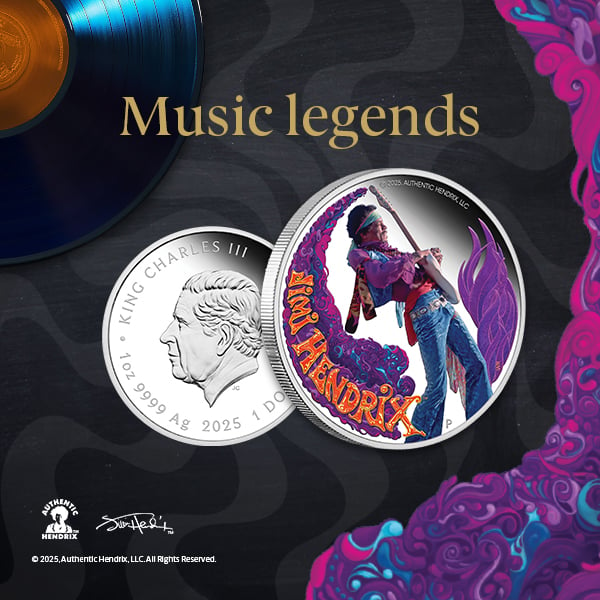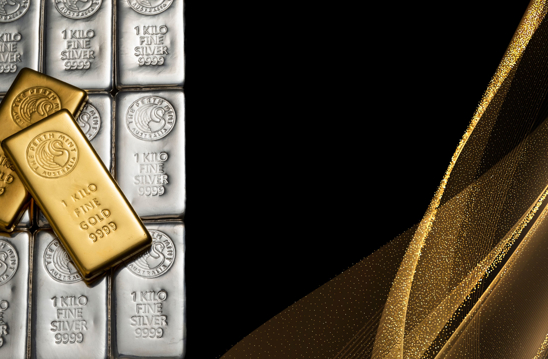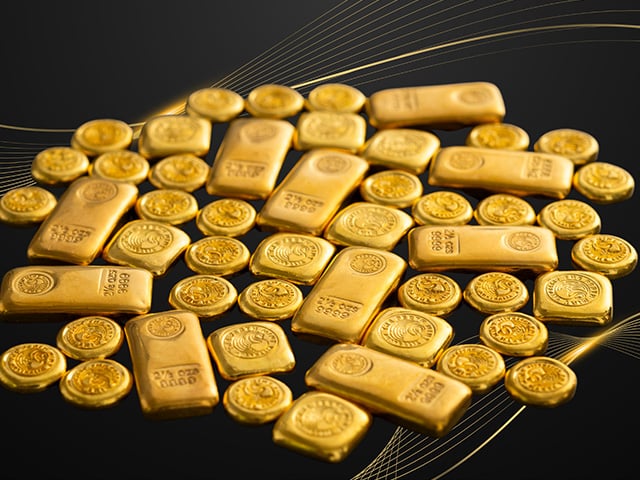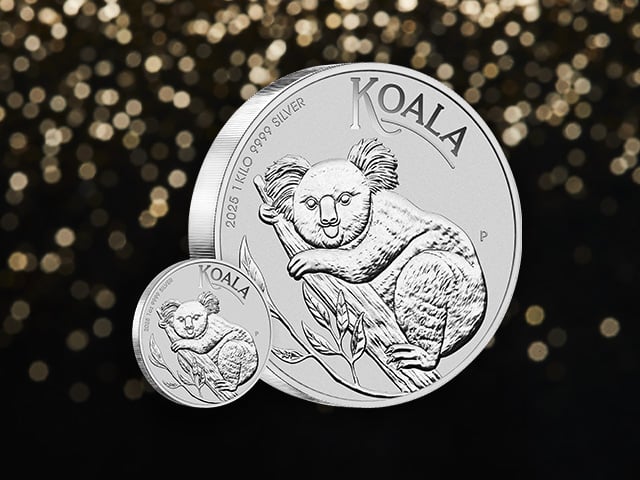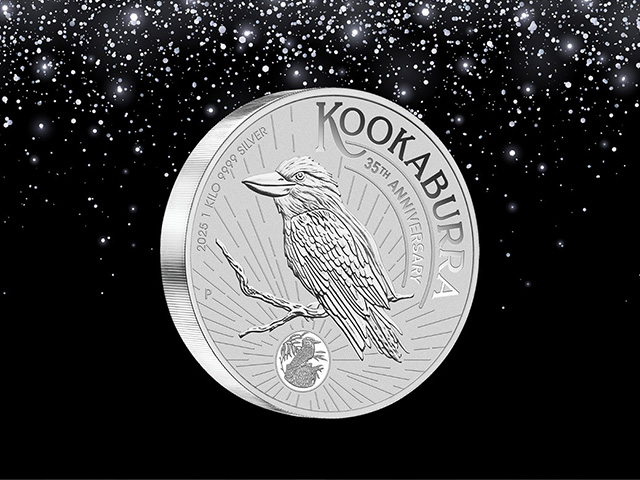Precious metals rally ends 2020 on a high

Precious metal markets capped a strong year with further price increases in December. Silver led the way with a 20% rally, whilst gold rose by 7% in USD terms, to finish the year trading just below USD 1,900 per troy ounce.
Gold again outperformed the majority of mainstream asset classes in 2020, with the impact of COVID-19, and the monetary and fiscal policy response to the crises driving demand for precious metals over the year.
Summary of market movers
- The gold price rallied 7% in USD and 3% in AUD terms in December, with the precious metal rising by 25% (USD terms) and 14% (AUD terms) for 2020.
- Silver had an even stronger move, increasing by 20% in USD terms in December. Across the entire year, it was up by almost 50% in USD terms.
- Silver’s outperformance saw the Gold to Silver ratio (GSR) end the year 71, having fallen from 85 at the end of 2019.
- The Australian dollar (AUD) continued to rise during December, ending the year at USD 0.77. It was up 10% for the year, and almost 40% from the mid- March 2020 low, when it traded down toward USD 0.55.
- Share markets also finished the year on a positive note, with the ASX up 1% whilst the S&P 500 was up by more than 3.5%.
- Real yields continued to fall during December, with 10 year US Treasury 10 bonds falling from -0.93% to -1.06%. They had started the year at +0.08%
- The USD index also declined in December, falling by 2% to end the year down 7%, having fallen almost 13% since its mid-March high.
Full report - December 2020
Precious metal prices ended 2020 on a high, with the USD price of gold and silver rising by 7% and 20% respectively during December. The rally capped a strong year, with precious metals outperforming the vast majority of asset classes.
From a return perspective, silver outperformed gold, though was substantially more volatile across the year, falling below USD 15 per troy ounce in March, with the GSR topping 110 at the time.
The strong finish to the year will encourage precious metal bulls that the textbook correction that we saw in gold between mid-August and end November has run its course.
The strong start to 2021 seen for gold and silver (both are up by more than 3% in the first few days of trading), will only reinforce this belief, with our view on the outlook shared in more detail below.
A year for the record books
Whilst most people will be happy to see the back of 2020, it is certainly a year we will never forget, given the emergence of COVID-19, and the impact it had on the economy and in our daily lives.
In financial markets, COVID-19 and the response to the economic slowdown from fiscal and monetary policymakers was profound, seen through a number of events that transpired across the course of the year. These include:
- The plunge in equity markets during Q1 2020, which saw the ASX fall by more than 30% in barely a month, one of its sharpest sell offs in history.
- The price of oil trading below zero in April 2020, with futures contracts at one-point trading at USD -37.63 per barrel as storage facilities reached capacity limitations, and COVID-19’s impact on demand wreaked havoc across the energy complex.
- The price of gold hitting all-time highs in nominal terms in August 2020. At one point the precious metal traded above USD 2,050 per troy ounce, whilst in AUD terms, gold was trading at more than AUD 2,800 per troy ounce. The market has had a healthy correction since.
- The rally in Bitcoin (BTC) and other cryptocurrencies also caught the markets attention. After selling off alongside equities and falling down toward USD 5,000 per coin in Q1, BTC staged a huge rally, and finished the year trading near USD 30,000 per coin. Other crypto’s like Ethereum actually outperformed BTC across the year, with investor interest in this space picking up notably.
- A surge in equity markets post the March lows, which culminated in one of the best ever single month returns in November, when the MSCI world rallied by more than 12.50%.
- An explosion in central bank balance sheets, which collectively increased by more than USD 8 trillion over the course of 2020. In April 2020, asset purchases by the four largest central banks totalled USD 1.5 trillion, six times the amount purchased at the height of the Global Financial Crisis.
- The relentless trend lower in real bond yields, which fell by more than 1.10% (US 10-year Treasuries) to end the year below -1%.
Amazingly, despite the chaos caused by COVID-19, the majority of asset markets delivered positive returns across calendar year 2020, further evidence that this has so far proved to be a recession unlike any other.
Outlook for 2021
After a strong price run that has seen gold rise by 59% since September 2018, there are some potential headwinds for the precious metal.
The first of these is the fate of the USD. Since March of last year, the US dollar has fallen by more than 12% (DXY index), with speculative positioning stretched by the end of 2020.
If this USD losing streak comes to an end soon, the gold price may pullback in the short-term, though for Australian dollar investors it would likely be less of an issue as the AUD would also be under pressure in these circumstances.
Continued strength in equity markets could also be a short-term headwind, as it may reduce investor desire to hold portfolio hedges like gold.
Despite these risks, there are numerous tailwinds that could push gold higher including:
Rising inflation expectations
The US five year forward inflation expectation rate ended 2020 at 2.03%. That is higher than the end of 2019, and an increase of more than 1.10% since inflation expectations plunged during March 2020.
Record low yields
By the end of 2020 only 15% of all global bond markets had a yield above 2%, with most government bonds already yielding less than inflation.
Outlook for monetary policy
Central Banks have been clear that more monetary stimulus will be forthcoming in 2021 and beyond, with cash rates unlikely to move higher for years to come.
Gold stands to benefit from this backdrop of already low to negative real yields and potentially higher inflation, especially given it has historically increased by approximately 20% per annum in AUD terms in years where real cash rates were 2% or lower, like they are today.
The fallout from COVID-19 remains an X factor for gold, and indeed for financial markets as a whole. Whilst everyone hopes that we have seen the worst, and that 2021 marks the beginning of a ‘post COVID’ world, there are no guarantees.
Mutations are beginning to develop, whilst meaningful parts of the global economy remain locked down. Even the best-case scenario, which would see a successful rollout of vaccines around the world, represents an enormous logistical (not to mention political) challenge, with global economic output unlikely to catch up to its pre COVID-19 trajectory for years.
Markets are pricing in a best-case scenario right now. If the situation deteriorates, expect risk assets to suffer, policy makers to deploy even more stimulus, and safe haven assets like gold to catch a bid.
The above tailwinds indicate that demand for gold, and therefore gold prices are likely to remain well supported as we move through 2021.
DISCLAIMER
Past performance does not guarantee future results. The information in this article and the links provided are for general information only and should not be taken as constituting professional advice from The Perth Mint. The Perth Mint is not a financial adviser. You should consider seeking independent financial advice to check how the information in this article relates to your unique circumstances. All data, including prices, quotes, valuations and statistics included have been obtained from sources The Perth Mint deems to be reliable, but we do not guarantee their accuracy or completeness. The Perth Mint is not liable for any loss caused, whether due to negligence or otherwise, arising from the use of, or reliance on, the information provided directly or indirectly, by use of this article.

